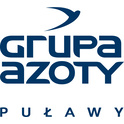Grupa Azoty PUŁAWY's strategy for 2011-2017 is based on our commitment to increase the economic value added in the long-term. Such approach gives a sense of security to the Company's shareholders, customers, partners and employees, and thus enables the Company to achieve its business targets.
We are well aware that the ability to generate profit is important, yet cannot be considered the sole indicator of a company value. We demonstrate our commitment by taking into account financing costs and seeking real growth sources.
.png)
The integrated business model plays a particularly important role in the pursuit of strategic business objectives, as it allows us to flexibly manage production and distribution to reflect current market conditions. As a result, we achieve efficiency improvement across all our business lines.
By 2017, we intend to establish a competence centre to help the Group's customers grow the value of their businesses. To that end, we improve the value of our products and build partnership-based relations.
INNOVATION AND DEVELOPMENT
Forward-looking initiatives and operational improvement
Capitalising on technological innovations is a must in contemporary business, in particular in the chemical industry, which continually implements new solutions. Grupa Azoty PUŁAWY constantly seeks new methods to enhance its technologies. To that end, it shares its experience with scientific institutes, including the Chemical Fertilizer Research Institute of Puławy.
Our recipe for development is to capitalise on innovative solutions provided by science and technology and invest in human capital.
• mechanical granulation of ammonium nitrate-based fertilisers:
• granulated ammonium nitrate (AN)
• calcium ammonium nitrate (CAN)
• ammonium sulphate nitrate (ASN)
• NP, NK and NPK fertilisers
• urea-based NP and NPK fertilisers with sulphur content
• slow-release and precision placement compound fertilisers
• liquid compound fertilisers based on urea-ammonium nitrate solution (UAN)
• cooperation to implement supercritical carbon dioxide extraction processes on a commercial scale
• establishing a vehicle to produce and sell hop extracts and other plant-based raw materials
• expanding the product range with high-margin chemical products based on renewable raw materials – diversification and new market entries
• versatile raw-materials base with a wide spectrum of applications to attract customers from various sectors, including cosmetics, pharmaceutical, brewing and food industries
• production of biodegradable plastics intermediates and biodegradable plastics based on
• melamine-based fire retardants
• urea - and melamine - based resins and adhesives
• plastics based on caprolactam and intermediates formed in caprolactam production
• high-purity ammonia for optoelectronic applications
• organic peroxides
Technologies that help reduce the cost of environmental fees a:
• solid waste management (BOŚ)
• utilisation of process condensates instead of surface water
• reducing nitrogen oxide emissions from the CHP plant
• modernisation of an ammonia unit to lower energy consumption
• implementation of advanced process control systems
